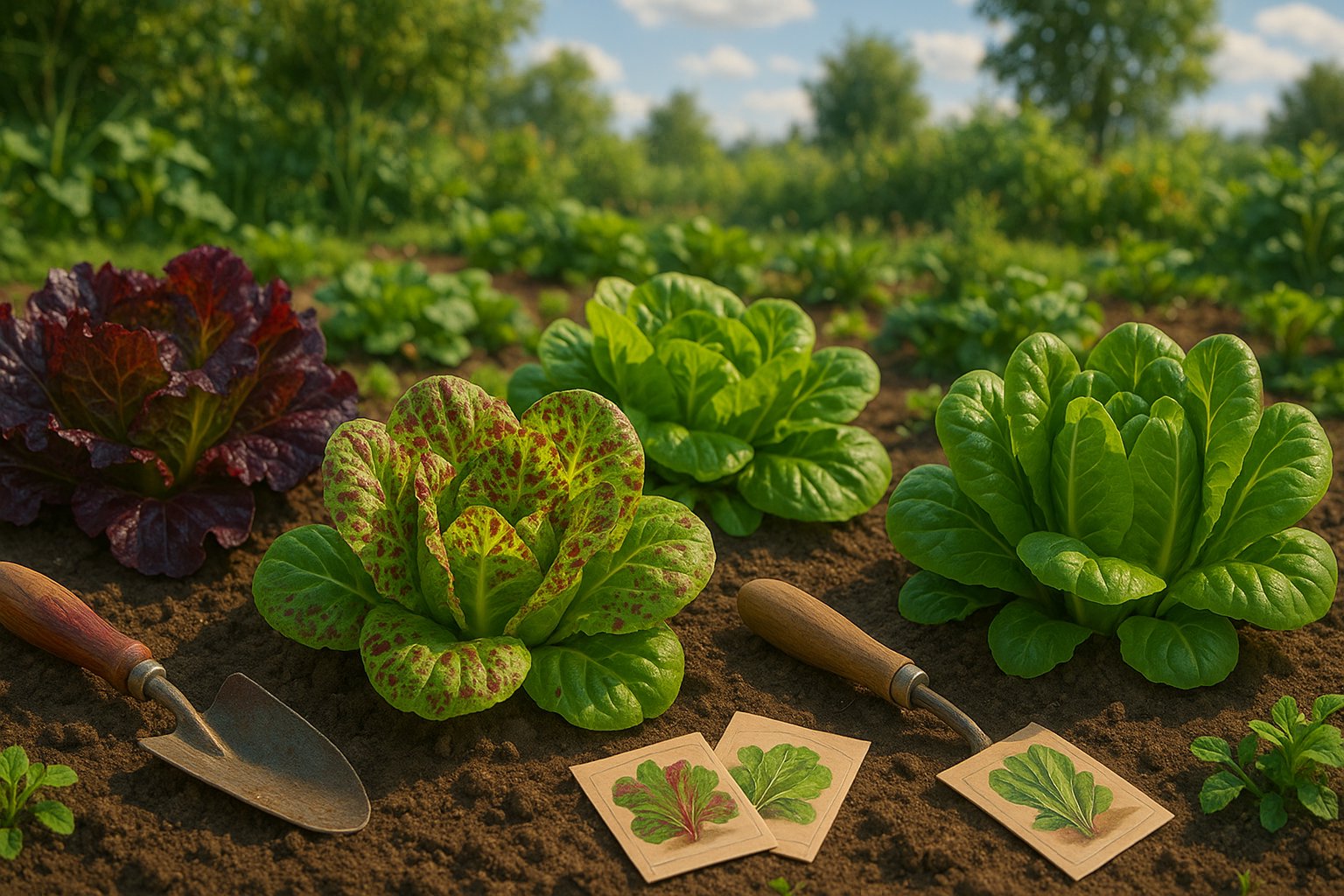Introduction to Heirloom Lettuce
Heirloom lettuce varieties are traditional, open-pollinated types of lettuce that have been cherished and cultivated by gardeners for generations. Unlike modern hybrids bred for shelf life or uniform appearance, heirloom lettuces are valued for qualities that matter most in the home garden: unique flavors, vibrant colors, and exceptional textures.
Gardeners often seek out heirloom varieties because they offer a depth of taste that store-bought lettuce rarely matches—imagine a buttery Bibb bursting with sweetness or a crisp Forellenschluss speckled with striking red splashes. These lettuces also bring diversity to the garden, with leaf shapes ranging from frilly to deeply lobed, and colors spanning green, red, bronze, and everything in between.
What sets these varieties apart isn’t just their flavors or looks—it’s their history. Passed down through families or communities, every heirloom has a story, connecting today’s gardeners with the past. Many heirloom lettuces also display impressive adaptability and resilience, thriving in varied climates and resisting common pests better than some hybrids.
If you’re looking to elevate your salads, delight your senses, and grow something truly special, exploring heirloom lettuce varieties is a rewarding path for every home gardener.
Why Grow Heirloom Lettuce in Your Garden?
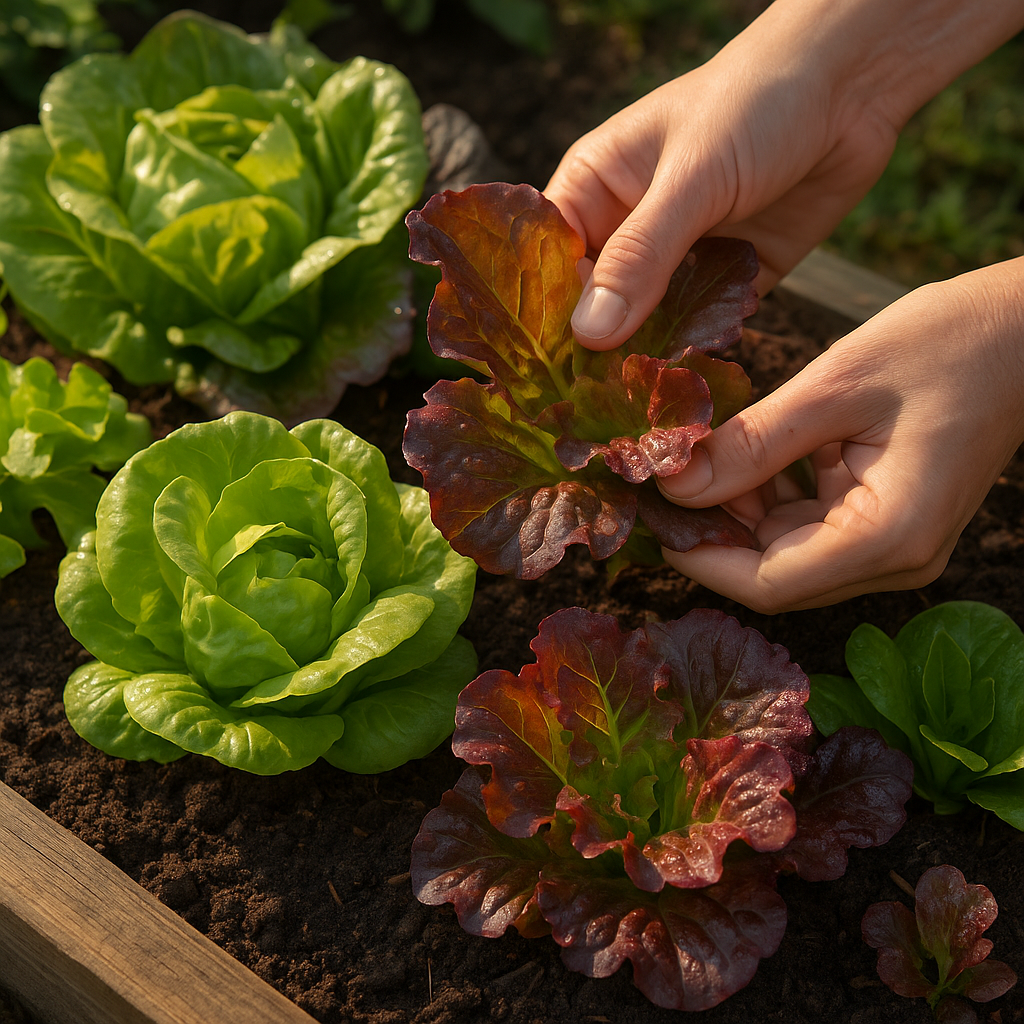
Growing heirloom lettuce in your garden brings a vibrant mix of color, flavor, and texture that supermarket varieties simply can’t match. With options ranging from delicate, frilly greens with hints of bronze to deep-red ruffled leaves and even speckled varieties, each plant is a living showpiece—making your salad bowl as visually appealing as it is delicious.
Heirloom lettuces stand out not just in looks but in taste, offering everything from buttery mildness to bold, nutty flavors far beyond the one-note crunch of typical store-bought lettuce. Beyond aesthetics and flavor, heirloom varieties are often more adaptable to local conditions and show increased resistance to common pests and diseases—many were cultivated over generations specifically for their hardiness in home gardens.
This adaptability means you’ll likely spend less on chemicals, and you can stretch your growing season with types suited for both cool and warm climates. Another major advantage is sustainability: heirloom lettuces are open-pollinated, so you can save seeds year after year, sharing or replanting your favorites while preserving genetic diversity for the future.
For home cooks and salad lovers, growing heirloom lettuce is especially rewarding. There’s satisfaction in harvesting leaves just minutes before they hit your plate, and with such a wide range of textures and flavors, your salads can be as creative and unique as your garden itself. Whether you’re topping a burger or assembling a colorful spring mix, heirloom lettuces offer a truly hands-on, farm-to-table experience right at home.
Top Heirloom Lettuce Varieties to Try
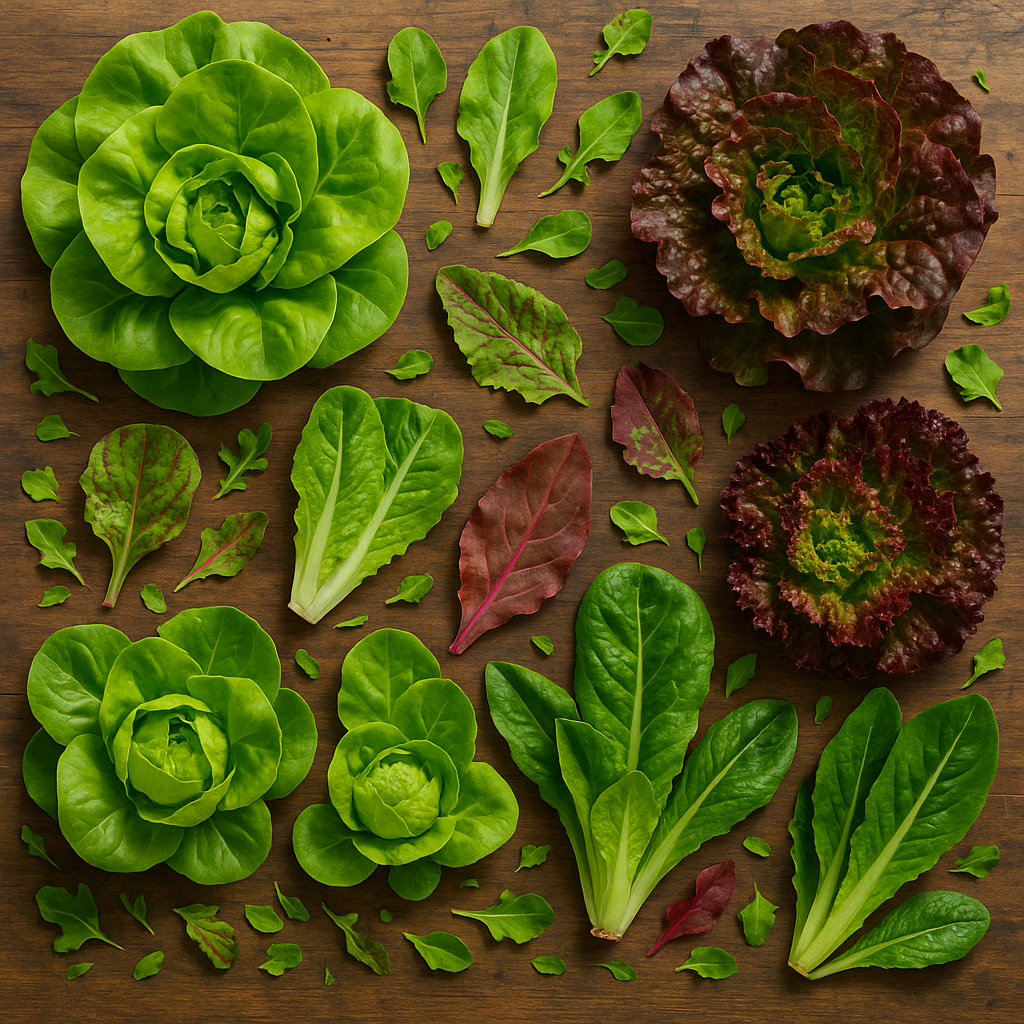
When it comes to growing heirloom lettuces, mixing different types—like butterhead, romaine, leaf, and oakleaf—adds both beauty and versatility to your garden and kitchen.
Buttercrunch, a butterhead classic, delights with tender, sweet leaves perfect for wraps or piling high in sandwiches; plus, its compact heads show good bolt resistance. Little Gem, a mini romaine, boasts a crisp bite and mild flavor, ideal for Caesar salads or as bite-sized lettuce cups, and it thrives even in cooler conditions.
Deer Tongue from the leaf lettuce family stands out with pointed leaves and a mild, slightly nutty taste—great for mixed salads or as a gourmet garnish—offering reliable harvests and quick regrowth. Flashy Trout’s Back is a showstopper with speckled romaine leaves and subtle bitterness, lending vibrancy to salads and impressive plate presentation, while tolerating warm spells surprisingly well.
For a frilly texture and bold crimson color, Lollo Rosso leaf lettuce is a top pick—its mildly spicy, tender leaves are perfect for salad mixes or topping burgers, and they stay productive when you harvest the outer leaves regularly. Cimmaron, a deep-hued romaine, features a mild, sweet crunch that stands up well to grilling or hearty salads, with vigorous, heat-tolerant growth.
Tom Thumb, an adorable butterhead, produces single-serving heads with buttery texture, ideal for individual salads or as edible garnish, and matures quickly for early harvests. Paris Island Cos is a go-to romaine with crisp, juicy ribs and classic flavor—excellent for all salads or crunchy lettuce wraps, and it’s known for resilience against disease.
Choosing Varieties
When picking varieties, opt for a blend of shapes, colors, and textures. Combine heat-tolerant types (like Buttercrunch and Cimmaron) with quick-maturing ones (Tom Thumb) to keep harvests coming. Mix bold hues (Lollo Rosso, Flashy Trout’s Back) with tried-and-true greens for salad bowls that are both visual and flavorful standouts.
By staggering plantings and mixing leaf types, you’ll enjoy continuous picking, visual variety, and a spectrum of flavors all season long.
Tips for Growing Heirloom Lettuce Successfully
Growing heirloom lettuce is both rewarding and manageable with a few simple strategies. Start by sowing seeds directly into rich, loose soil—whether in the ground, raised beds, or containers—about 1/8 inch deep. Heirloom lettuces thrive in full sun but benefit from afternoon shade in hot climates, so choose a spot that gets at least 5-6 hours of light.
Keep the soil consistently moist, but avoid overwatering, as soggy roots can invite disease; using a fine mist sprayer helps maintain even moisture for tender seedlings. For a steady harvest throughout the season, practice succession planting by sowing a new batch of seeds every two to three weeks—this way, you’ll always have young, tender leaves coming up as mature ones are harvested.
Be vigilant for common pests like aphids and slugs, which are attracted to heirloom varieties’ tender leaves. Hand-pick pests, and try organic solutions like neem oil or diatomaceous earth to minimize damage. Also, rotate your crops and clear fallen leaves to prevent diseases such as downy mildew and leaf spot, which can sometimes be more problematic in heirloom strains.
Heirloom lettuces do exceedingly well in well-draining raised beds and containers, making them perfect for small spaces—just ensure pots are at least 8 inches deep. In-ground beds allow for larger harvests, but all setups benefit from adding compost to boost soil fertility and structure.
With mindful planting, regular monitoring, and the right setup, heirloom lettuce can flourish nearly anywhere in your garden.
Harvesting and Using Heirloom Lettuce
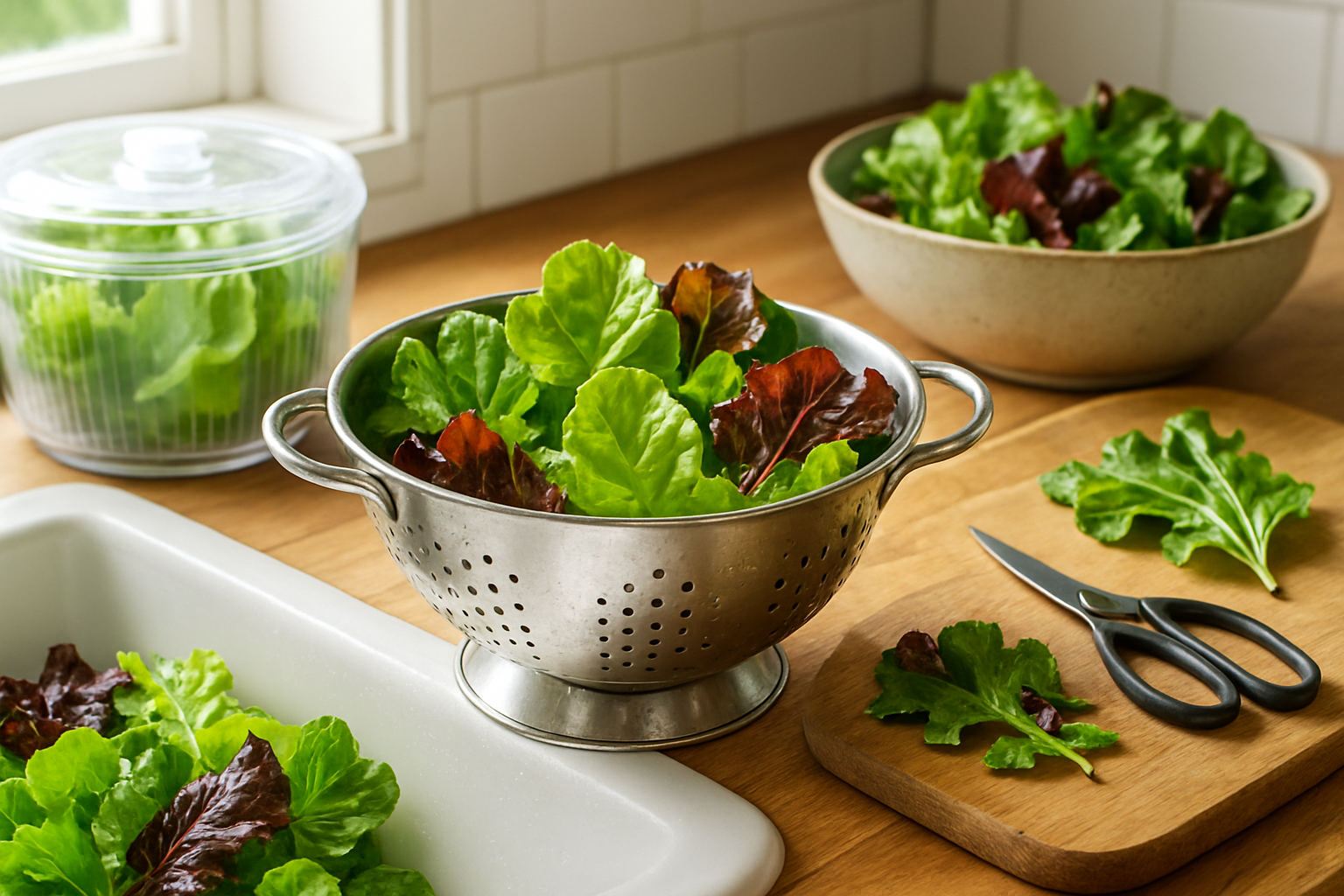
Harvesting heirloom lettuce at the right time ensures the best flavor and texture. Aim to pick leaves early in the morning, just after the dew dries but before the sun gets hot, as this keeps greens crisp and sweet.
For loose-leaf varieties like Black Seeded Simpson or Bronze Beauty, try the “cut and come again” method: use scissors to snip outer leaves an inch above the base, leaving the inner rosette to regrow for multiple harvests over the season. This not only extends your harvest but also encourages tender new growth.
Enjoy fresh leaves in garden salads, on sandwiches, or as edible wraps. Many heirloom types also make vibrant and nutrient-rich microgreens—simply scatter seeds thickly, keep the soil moist, and snip shoots when they reach 2-3 inches.
After harvesting, immerse the leaves in cool water and gently swish to remove grit. Then spin or pat them dry before storing in airtight containers with a paper towel to absorb moisture. Store in the fridge’s crisper drawer and use within a week for the freshest taste. These extra steps help preserve the delicate textures and flavors that make homegrown heirloom lettuce a real treat.
Seed Saving and Sustainability
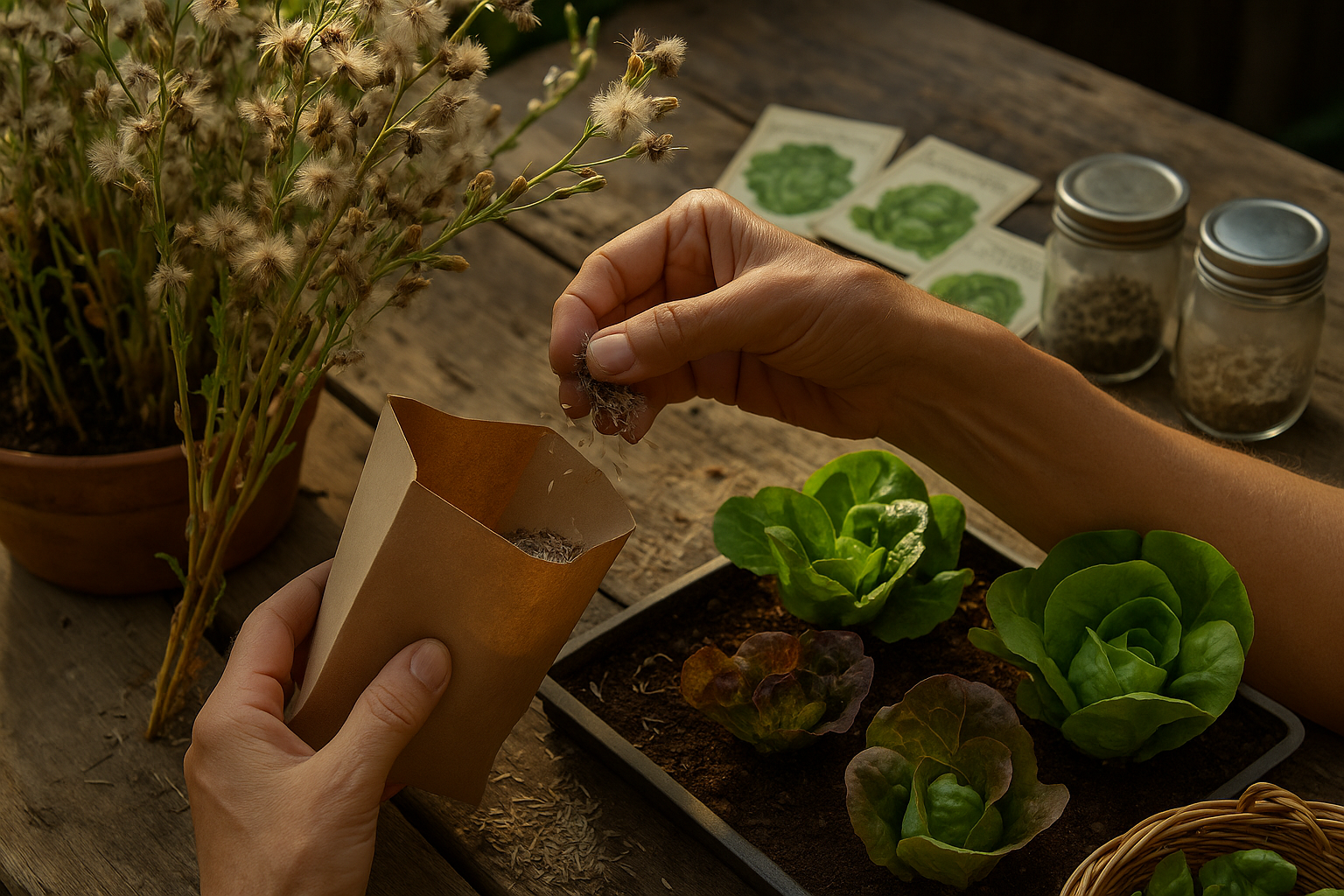
Saving seeds from heirloom lettuce is a simple yet powerful way to promote sustainability and preserve biodiversity right in your backyard. Unlike many hybrids, heirloom varieties are open-pollinated, which means they produce seeds true to type.
To save seeds, let a few healthy lettuce plants “bolt”—grow tall and flower—instead of harvesting every head. Once the flowers dry and produce seeds, gently shake or rub them into a paper bag. Be sure to dry the seeds thoroughly before storing them in a cool, dry place for the next planting season.
This practice not only saves money but also helps keep unique, regionally adapted varieties alive, protecting genetic diversity. By selecting seeds from the best-performing plants, you’ll gradually develop a crop perfectly suited to your local environment, reducing dependence on commercial seed sources.
Over time, gardeners who swap seeds build community resilience and lessen reliance on industrial agriculture. Seed saving transforms your garden into a small, vital reservoir of plant diversity—an easy step for anyone looking to nurture a more sustainable future.
Conclusion and Inspiration
Exploring heirloom lettuce opens up a world of flavors and colors that can transform both your meals and your garden. By planting a mix of varieties, you not only enjoy unique tastes and textures but also add visual interest to your beds with vibrant leaves. Growing your own heirloom lettuce brings a sense of self-sufficiency and offers fresher, healthier salads.
Experimenting with different types helps you discover your personal favorites while playing a part in preserving important culinary traditions. So, grab some seeds, try a new variety this season, and delight in the rich diversity heirloom lettuce has to offer!
